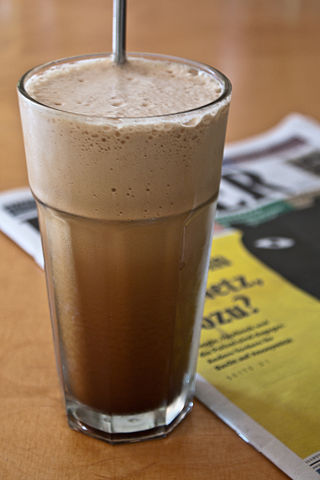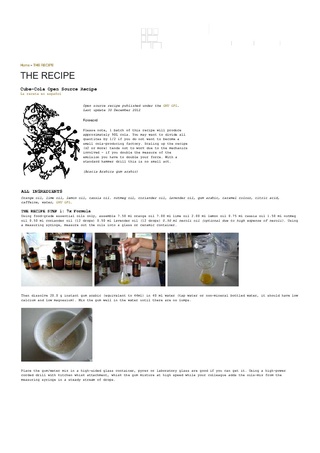Sugar cubes are white granulated sugar pressed together into block shapes that are used to sweeten drinks
Sugar cubes may also refer:
- The Sugarcubes, a rock-pop band from Iceland
- A Cube of Sugar , a 2011 Iranian film
Sugar cubes are white granulated sugar pressed together into block shapes that are used to sweeten drinks
Sugar cubes may also refer:

The Rubik's Cube is a 3-D combination puzzle originally invented in 1974 by Hungarian sculptor and professor of architecture Ernő Rubik. Originally called the Magic Cube, the puzzle was licensed by Rubik to be sold by Pentangle Puzzles in the UK in 1978, and then by Ideal Toy Corp in 1980 via businessman Tibor Laczi and Seven Towns founder Tom Kremer. The cube was released internationally in 1980 and became one of the most recognized icons in popular culture. It won the 1980 German Game of the Year special award for Best Puzzle. As of March 2021, over 450 million cubes had been sold worldwide, making it the world's bestselling puzzle game and bestselling toy. The Rubik's Cube was inducted into the US National Toy Hall of Fame in 2014.

Sugar is the generic name for sweet-tasting, soluble carbohydrates, many of which are used in food. Simple sugars, also called monosaccharides, include glucose, fructose, and galactose. Compound sugars, also called disaccharides or double sugars, are molecules made of two bonded monosaccharides; common examples are sucrose, lactose, and maltose. White sugar is a refined form of sucrose. In the body, compound sugars are hydrolysed into simple sugars.

O'Shea Jackson Sr., better known as Ice Cube, is an American rapper, songwriter, actor, and film producer. His lyrics on N.W.A's 1988 album Straight Outta Compton contributed to gangsta rap's widespread popularity, and his political rap solo albums AmeriKKKa's Most Wanted (1990), Death Certificate (1991), and The Predator (1992) were all critically and commercially successful. He was inducted into the Rock and Roll Hall of Fame as a member of N.W.A in 2016.

Pastis is an anise-flavoured spirit and apéritif traditionally from France, typically containing less than 100 g/L sugar and 40–45% ABV.

Jaggery is a traditional non-centrifugal cane sugar consumed in the Indian Subcontinent, Southeast Asia, Central América, Brazil and Africa. It is a concentrated product of cane juice and often date or palm sap without separation of the molasses and crystals, and can vary from golden brown to dark brown in colour. It contains up to 50% sucrose, up to 20% invert sugars, and up to 20% moisture, with the remainder made up of other insoluble matter, such as wood ash, proteins, and bagasse fibres. Jaggery is very similar to muscovado, an important sweetener in Portuguese, British and French cuisine. The Kenyan Sukari ngutu/nguru has no fibre; it is dark and is made from sugar cane and also sometimes extracted from palm tree.

A sugarloaf was the usual form in which refined sugar was produced and sold until the late 19th century, when granulated and cube sugars were introduced. A tall cone with a rounded top was the end product of a process in which dark molasses, a rich raw sugar that was imported from sugar-growing regions such as the Caribbean and Brazil, was refined into white sugar.

Why not Sneeze, Rose Sélavy? is a 1921 "readymade" sculpture by Marcel Duchamp. Specifically, Duchamp considered this to be an "assisted Readymade", this being because the original objects of which the work is made up had been altered by the artist. They consist of a birdcage, 152 white cubes, a medical thermometer, a piece of cuttlebone, and a tiny porcelain dish. The birdcage is made of painted metal and contains several wooden perches.

Teh tarik is a popular hot milk tea beverage most commonly found in restaurants, outdoor stalls, mamaks and kopitiams within the Southeast Asian countries of Malaysia, Indonesia, Singapore and Thailand. Its name is derived from the process of repeatedly pouring the drink back and forth from one container into another with arms extended during preparation, which helps to slightly cool the tea for consumption and giving it a frothy head. It is made from a strong brew of black tea blended with condensed milk. It is the national drink of Malaysia.

A bouillon cube, stock cube, or broth cube (Asia) is dehydrated broth or stock formed into a small cube or other cuboid shape. The most common format is a cube about 13 mm wide. It is typically made from dehydrated vegetables or meat stock, a small portion of fat, MSG, salt, and seasonings, shaped into a small cube. Vegetarian and vegan types are also made. Bouillon is also available in granular, powdered, liquid, and paste forms.

Aamras is a sweet dish in the cuisine of the Indian subcontinent made from the pulp of the mango fruit. The pulp of a ripe mango is extracted, usually by hand, and is eaten together with pooris or chapatis, Indian breads. Sometimes ghee and milk are added to the pulp to enhance its flavour. Sugar may be added for sweetness. It is often eaten at celebrations and weddings with cardamon and chopped fruits.
A sugar bowl is a small bowl designed for holding sugar or sugar cubes.
"Sugar Town" is a song written by songwriter-producer Lee Hazlewood and first recorded by American singer Nancy Sinatra in 1966. As a single released under the Reprise label, it peaked at number five on the Billboard Hot 100 chart in December 1966, while reaching number one on the Easy Listening chart in January 1967. It became a gold record. The song was included on Nancy Sinatra's LP, Sugar, also released in 1966, and was featured in her 1967 TV special Movin' with Nancy, released on home video in 2000.

Tocino is bacon in Spanish, typically made from the pork belly and often formed into cubes in Spain. In Caribbean countries, such as Puerto Rico and Cuba, tocino is made from pork fatback and is neither cured nor smoked but simply fried until very crunchy; it is then added to recipes, much like the way lardons are used in French cuisine. In the Philippines, tocino refers to sweetened and cured pork belly.

A flaming drink is a cocktail or other mixed drink that contains flammable, high-proof alcohol, which is ignited before consumption. The alcohol may be an integral part of the drink, or it may be floated as a thin layer across the top of the drink. The flames are mostly for dramatic flair. However, in combination with certain ingredients, the flavor of the drink is altered. Some flavors are enhanced, and the process may impart a toasted flavor to some drinks.

Sohan papdi is a popular dessert in the Indian subcontinent. Soan Papdi has no confirmed origin, but it is believed to have originated in the western state Maharashtra, India. According to a culinary anthropologists, the word "soan" has Persian origin and the name comes from the term sohan pashmaki. Others speculation also includes that ranges from Rajasthan, Uttar Pradesh, Punjab and West Bengal. It bears some resemblance to the Dragon's beard candy in China, Kkul-tarae in Korea, Persian pashmaki, which gave rise to the Turkish pişmaniye. It is usually cube-shaped or served as flakes, and has a crisp and flaky texture. Traditionally sold loose in rolled paper cones, modern industrial production has led it to being sold in the form of tightly formed cubes.

A frappé coffee, Cold coffee, Greek frappé, or just frappé is a Greek iced coffee drink generally made from spray-dried instant coffee, water, sugar, and milk. The word is often written frappe. The frappé was invented through experimentation by Dimitris Vakondios, a Nescafe representative, in 1957 in Thessaloniki. Frappés are among the most popular forms of coffee in Greece and Cyprus and have become a hallmark of postwar outdoor Greek coffee culture.
Kryštof is a Czech name, equivalent to English Christopher. It may refer to:

Open-source cola is any cola soft drink produced according to a published and shareable recipe. Unlike the secretive Coca-Cola formula, the recipes are openly published and their re-use is encouraged. The texts of OpenCola and Cube-Cola recipes are published under the GNU General Public License (GPL).

Rüdesheimer Kaffee is an alcoholic coffee drink from Rüdesheim am Rhein in Germany invented in 1957 by the German television chef, Hans Karl Adam. It is a popular drink in coffee houses.

Avocado and milk in ice is a traditional Filipino dessert or beverage made from avocado in milk and sugar. It is preferably eaten cold. Ice are added, or it is partly frozen before consumption. The milk can also be excluded, mixing avocados directly with sugar. The avocados can also be mashed or puréed, which is usually called avocado milkshake or avocado smoothie. Sliced dessert bananas are sometimes added.